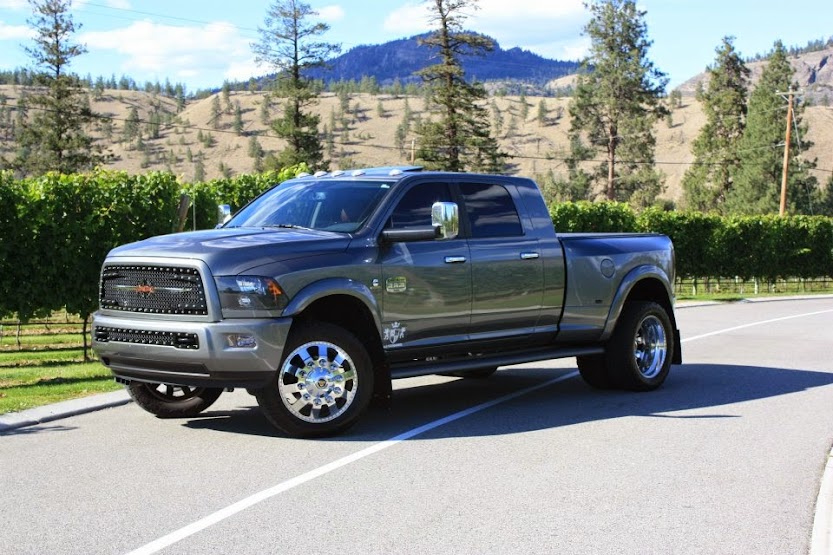Fuel Dually Wheels Hostage II Dually Front D232 Wheels SoCal
16 Inch Alcoa Dually Wheels - One of the wheels is often a circular component that is intended to rotate by using an axle bearing. The wheel is one of many reasons parts of the wheel and axle which is probably the six simple machines. Wheels, in partnership with axles, allow heavy objects to remain moved easily facilitating movement or transportation while supporting a large quanity, or performing labor in machines. Wheels can also be for other purposes, such as a ship's wheel, tyre, potter's wheel and flywheel.Common examples are located in transport applications. One of the wheels greatly reduces friction by facilitating motion by rolling together with the use of axles. In order for wheels to rotate, a flash must have to be relevant to the wheel about its axis, either because of gravity or by the usage of another external force or torque.The English word wheel originates from the Old English word hweol, hweogol, from Proto-Germanic *hwehwlan, *hwegwlan, from Proto-Indo-European *kwekwlo-, a lengthy method of the basis *kwel- "to revolve, navigate around ".Cognates within Indo-European include Icelandic hjól "wheel, tyre", Greek κύκλος kúklos, and Sanskrit chakra, aforementioned both meaning "circle" or "wheel ".Precursors of wheels, generally known as "tournettes" or "slow wheels", were known while in the Middle East by the 5th millennium BCE (one of the primary examples was discovered at Tepe Pardis, Iran, and dated to 5200–4700 BCE). We were looking at produced from stone or clay and secured to the ground along with a peg from the center, but required effort to turn. True (freely-spinning) potter's wheels were apparently being listened to in Mesopotamia by 3500 BCE and possibly as early as 4000 BCE, and also oldest surviving example, that's present in Ur (modern day Iraq), dates to approximately 3100 BCE.The best evidence of wheeled vehicles appears within the partner on the 4th millennium BCE, near-simultaneously in Mesopotamia (Sumerian civilization), the Northern Caucasus (Maykop culture) and Central Europe (Cucuteni-Trypillian culture), therefore,the question which culture originally invented the wheeled vehicle continues to be unsolved.The earliest well-dated depiction to a wheeled vehicle (here a wagon — four wheels, two axles) is at the Bronocice pot, a c. 3500 – 3350 BCE clay pot excavated from a Funnelbeaker culture settlement in southern Poland.The oldest securely dated real wheel-axle combination, that from Stare Gmajne near Ljubljana in Slovenia (Ljubljana Marshes Wooden Wheel) is dated in 2σ-limits to 3340–3030 BCE, the axle to 3360–3045 BCE.Two types of early Neolithic European wheel and axle are known; a circumalpine method of wagon construction (the wheel and axle rotate together, just as Ljubljana Marshes Wheel), and also of one's Baden culture in Hungary (axle is not going to rotate). They both are dated to c. 3200–3000 BCE.In China, the wheel was certainly present when using the adoption on the chariot in c. 1200 BCE,although Barbieri-Low[9] argues for earlier Chinese wheeled vehicles, c. 2000 BC.
Related Images with Fuel Dually Wheels Hostage II Dually Front D232 Wheels SoCal
single cab cummins dually alcoa dually wheels 22 5 dually wheels
20 Inch Dually Wheels 2016 2016 Car Release Date

100,000Mile Semi Tires For Dualies Diesel Power Magazine
Ford F350 Dually Parts Parts Supply Store Your 1 Resource For Car
| TITLE: | Fuel Dually Wheels Hostage II Dually Front D232 Wheels SoCal |
| IMAGE URL: | http://images.socalcustomwheels.com/images/wheels/xlarge/fuel_Hostage_Duallie-front-1000.png |
| THUMBNAIL: | https://tse1.mm.bing.net/th?id=OIP.3VYUwpadJSg-5XvW20SEowEsEs&pid=Api&w=180&h=181 |
| IMAGE SIZE: | 765223 B Bs |
| IMAGE WIDTH: | 1000 |
| IMAGE HEIGHT: | 1000 |
| DOCUMENT ID: | OIP.3VYUwpadJSg-5XvW20SEowEsEs |
| MEDIA ID: | 9DB95D4B85A2BA962721C2CD43DB5CCEF6A1443B |
| SOURCE DOMAIN: | autospecsinfo.com |
| SOURCE URL: | http://www.autospecsinfo.com/review/17-inch-dually-wheels |
| THUMBNAIL WIDTH: | 180 |
| THUMBNAIL HEIGHT: | 181 |
Related Images with Fuel Dually Wheels Hostage II Dually Front D232 Wheels SoCal
single cab cummins dually alcoa dually wheels 22 5 dually wheels
20 Inch Dually Wheels 2016 2016 Car Release Date

Komentar
Posting Komentar